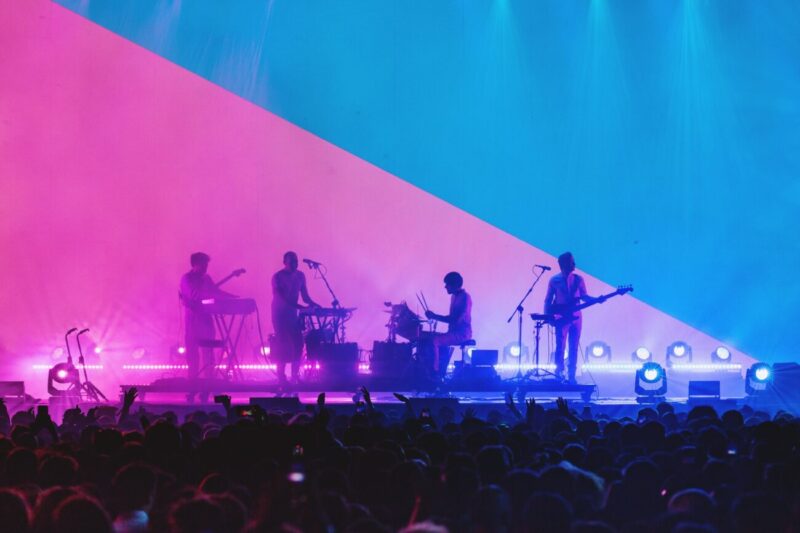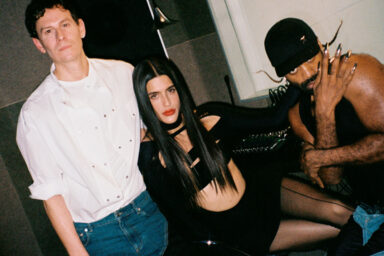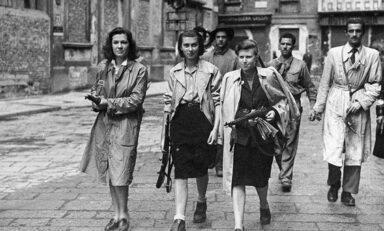As always, Club to Club is a good time to take live stock of the best of new global pop music-or “avant-pop.” So let’s take a look at the promoters and failures, at least among those I was able to listen to: the festival is long, comes with overlap, and sometimes all it takes is waiting in line for an overpriced drink to miss an act
Words DOMENICO COSTANTINI
PROMOTED
Friday night at the Lingotto opens (at least for me) with Autechre, who performed on the smaller of the two stages in total darkness: the entire Lingotto pavilion is lit only by the lights of emergency exits and the occasional smartphone. The impact at the entrance is powerful, benefiting from the post-industrial charm of the site more than any elaborate light show […] not least because, of course, Autechre knows what they’re doing, and they deliver a stunner of a set. Eurocultured music theorists insisted, in the last century, on the need for “absolute music”: music that describes nothing, “mental” and not “corporeal,” that does not have to associate itself with anything (stories, images, lights) but exists in a utopian “purity.” Here it is: in the domain of electronic music, the Autechre do something like this – as far as the body, in their music, is there indeed (it vibrates, and not a little, in front of the subwoofers). Plus, with the now-acquired status of “classics” granting them the respect due to great innovators.

Caribou, appearing in a four-piece lineup, now sounds like a “real” band, and knows how to mix a live approach with long “mixed” reworkings of the singles that made the project’s fortune, such as “Odessa” and “Sun” (which, unbelievable, came out 12 years ago: how time passes). The audience likes it and dances to the long final reprise, just of “Sun.” Essential visuals – geometric shapes and primary colors – but of great impact.

Caterina Barbieri ushers a proposal that draws heavily from seventies atmospheres, in this case on the side of German cosmic music or certain contemporary à la Terry Riley and friends. With gorgeous visuals, reduced to a black silhouette set against the backdrop of a dramatic sky in saturated colors, the musician sets a “hard and pure” beat for modular synthesizers only. The result is thrilling, although given the late-evening placement much of the audience eagerly awaits a drum machine to dance to. “But is it all like this?” wonders a highly charged guy behind me. The answer is yes.

FAILED
And we come to the failures. On opening night in the Officine Grandi Riparazioni complex, I found Lyra Pramuk‘s long set borderline bearable. If listening to her excellent 2020 debut, in the Turin live show one got the impression of a long vocal improvisation without head or tail or structure, but only with the whole set of Ableton Live effects activated at the same time. Okay, beautiful voice, very charming. However, the game lasts for about 5 minutes, and then everything else is wiresome.

The other surprise illustrious rejection is for Arca. I had seen the Venezuelan producer twice, again at Club to Club. The first time, in 2016, I remember walking out of the set with visual artist Jesse Kanda at once disturbed and fascinated: the Arca myth was just beginning, and in that DJ set-which had half turned into a live show, with Arca making her debut as a singer-you could sense its full potential, later amply expressed. Salsa quotes (“Llorarás” by Oscar D’León) carried through to the clipping, metal foils, images of calves being delivered… The second time, the following year, I had come out equally enthusiastic. And what’s left now? The manner, or a tad more. The concert flows slowly and continually interrupted by self-referential dialogues with the audience, between moments that would like to be disturbing performances that are odorless. Of course, moments of light are there, and they still know how to rip through the ordinary: as when the discontinuous flow veers toward the reguetón, or appears-slightly accelerated-this gem by Yahritza Y Su Esencia, a group by 15-year-old LA-based Yahritza Martinez and her two brothers. A bombshell. Otherwise, however, little remains of the power that was. Off night? That can be expected. Or perhaps having exhausted that initial thrust, that break beyond which nothing can be “new” anymore, one is forced into self-indulgence, into making verse to oneself night after night–a shame. The visual, however, is artfully done, morphological freedom is the driving force behind the series of digital collages created by artist Carlos Saèz, a series of images linked to the body to create an anatomical mosaic leaving everyone breathless.



